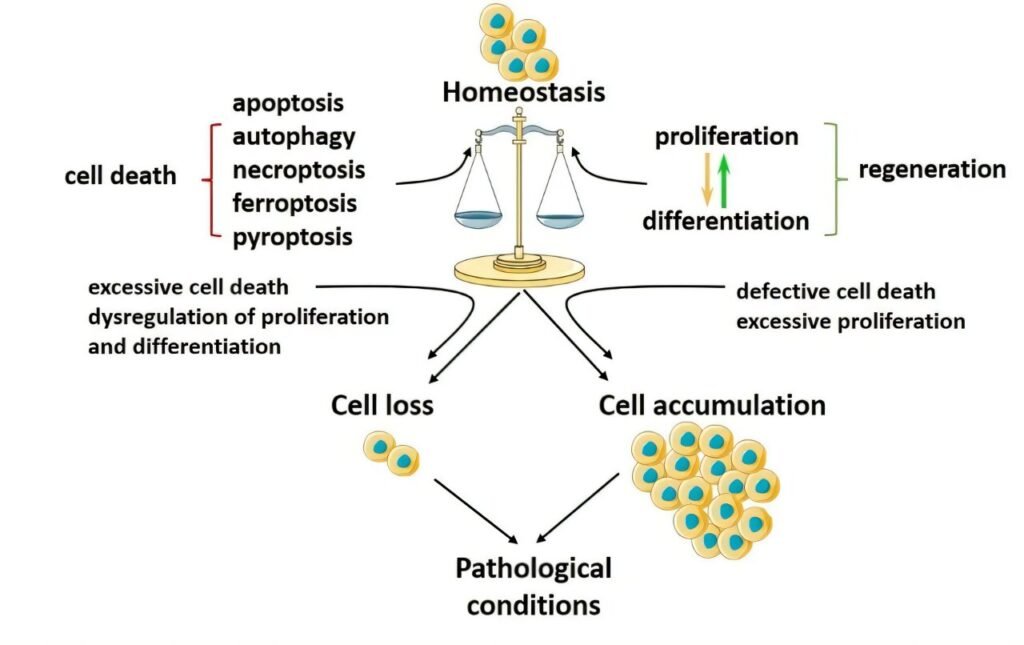The intricate dance between cell death and regeneration is a crucial aspect of human health and longevity. Programmed cell death (PCD) is a fundamental mechanism that plays a vital role in tissue renewal and repair following injury. However, when this process goes awry, it can lead to the development of various diseases such as cancer, fibrosis, neurodegenerative disorders, and other age-related conditions.
A recent study conducted by researchers at the Institute of Environmental Medicine, Karolinska Institutet, delves deep into the interconnectedness of cell death and regeneration. Published in the prestigious journal Physiological Reviews, the study sheds light on the intricate relationships between these two processes.
According to Professor Emeritus Boris Zhivotovsky, one of the lead authors of the study, cellular homeostasis is maintained through three essential physiological processes: proliferation, differentiation, and cell death. Proliferation and differentiation are closely linked to regeneration, highlighting the importance of these processes in maintaining tissue health and function.
Throughout an organism’s lifespan, cells are constantly renewed, albeit at varying rates across different tissues. Stem cells play a crucial role in generating new cells in postnatal tissues through mechanisms such as proliferation, differentiation, and reprogramming. Maintaining a delicate balance between stemness and differentiation is particularly critical for stem cells, especially in the context of aging and degenerative diseases.
While past research has primarily focused on stem cell self-renewal and differentiation, the mechanisms of stem cell elimination have been relatively overlooked. The study suggests that cell death and regeneration are not opposing forces but rather complementary processes that work together to maintain tissue homeostasis.
The symbiotic relationship between cell death and regeneration holds significant implications for regenerative biomedicine, a rapidly evolving field that aims to harness the body’s innate regenerative capacities to restore damaged tissues and organs. By understanding the body’s natural mechanisms for cell death and regeneration, researchers can develop innovative strategies to promote health and extend human lifespan.
The study’s findings underscore the importance of unraveling the intricate connections between programmed cell death and tissue regeneration. By exploring these complex relationships, researchers can pave the way for groundbreaking advancements in regenerative medicine, offering new hope for patients suffering from a wide range of diseases and disorders.
For more information, you can access the study titled “Programmed Cell Death and Tissue Regeneration: A Link That Should Be Resolved” published in Physiological Reviews in 2025. This research opens up exciting possibilities for the future of regenerative medicine and holds promise for improving human health and well-being.


